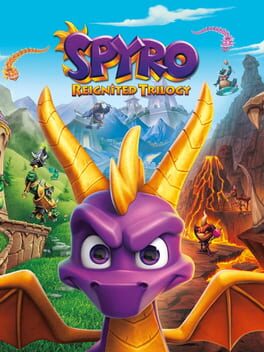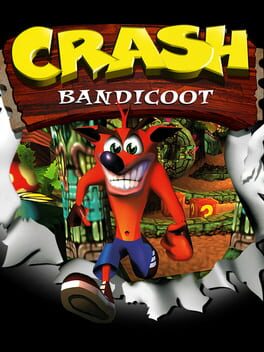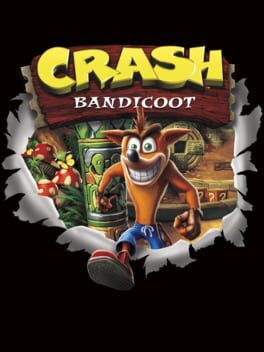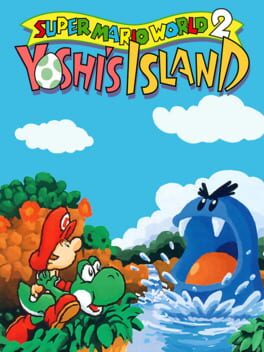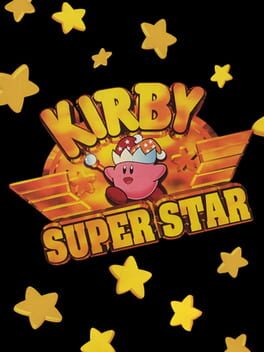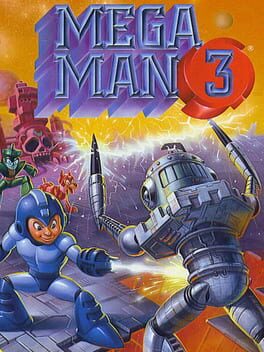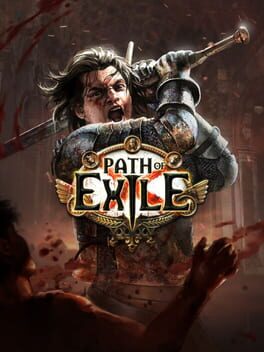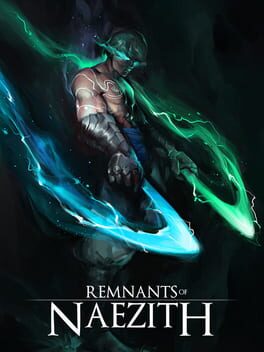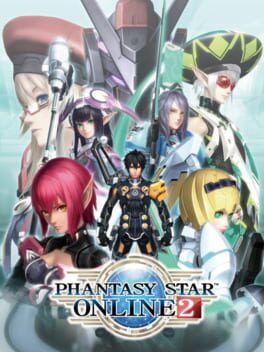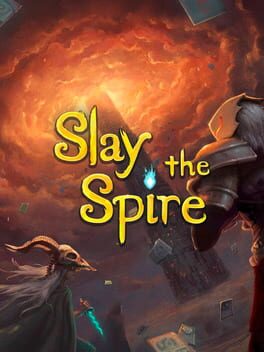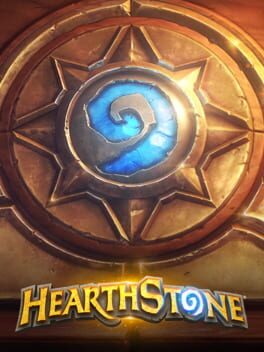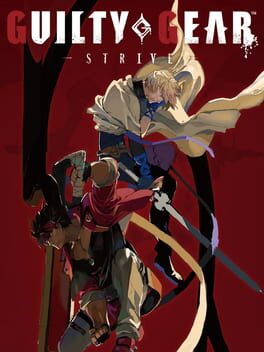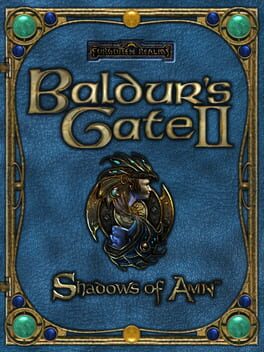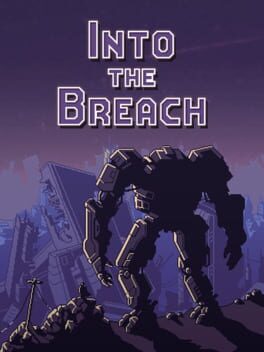synthezoid
FOV woes mar a lovingly-crafted remake with the persistent threat of motion sickness. Playing this game for more than a few minutes makes me feel ill, which is a shame, because I love how cozy its worlds are to explore. I still find myself slowly chipping away at the first game, hoping the sequels magically feel better.
1996
2017
Crash Bandicoot, one of the first successful 3D platformers and a rallying cry for Playstation's side in the console wars of the 90s, is a challenging, satisfying platformer that falls victim to a few minor missteps. Chief among them, the level variety is fairly weak, with several levels that reuse a theme and mechanics extensively. Seeing the same challenges in marginally different configurations two or three times starts to feel like padding despite the game's otherwise blissfully brisk playtime. I almost wish these had been rebuilt into one escalating megalevel or something. Of course, the archaic lives system might make longer levels intolerable.
Naughty Dog's Jason Rubin even singles out the lives system as a mistake on Andy Gavin's enlightening retrospective blog series (here: https://all-things-andy-gavin.com/2011/02/07/making-crash-bandicoot-part-6/). "And then there was our annoying way of making players earn continues. This was a major mistake. It makes players that need lives fail while boring players that don’t. It is the opposite of good game balance." Given the success of Crash 2's innovative dynamic difficulty systems, it's hard not to see this as incongruous with the spirit of Crash Bandicoot. Surely a game about always moving forward shouldn't burden players with restarting a level they're already invested in?
Despite this gripe, though, I didn't actually experience enough pace-breaking level resets to really mind them--and compared to multiple-level-long saveless screens in some classic SNES platformers, Crash seems downright charitable by comparison.
Much of my willingness to look past this is owed to its fair but engrossing challenge. It gets pretty hard, yes, but most of the time it gives you all the tools to succeed. Even the notorious "pill-shaped hitboxes" that allegedly affect the remake didn't seem to tangibly affect me, outside of a few possible edge cases. By and large, the platforming is precise and straightforward. The rub comes mostly from levels that see Crash running away from the camera ("Sonic's ass" levels, as they were known). While some of these levels are just fine, with simple hazards and clear boundaries, some challenge your depth perception more than your reflexes. In these moments, I simply didn't have the moral strength to blame myself. It is the game's fault. There are a number of points in Crash 1 where you WILL die that simply wouldn't happen if it were a sidescroller instead. For a game whose major innovation is its Z-axis, it doesn't always make a compelling argument for one. It can't hope to match the precision or polish of a 2D game like Donkey Kong Country, nor does it innovate quite like Mario 64. (To be fair, what does?) This liminal space it occupies between the very best of 2D and 3D platformers means that, upon assessment, Crash Bandicoot is all but doomed to play second fiddle to its contemporaries.
Speaking of DKC, for a game which feels so much like an attempt to translate those games to 3D, Crash, while precise and easily controlled, sorely misses the weight and momentum of those games. The Kongs could roll and roll-jump to build blazing speed or leap off enemies with ease. Crash can do some of that... much much slower. And he can spin. Unlike DK's powerful but committal roll, Crash's spin basically just turns him into a damaging hitbox. There are no seriously deep or interesting techniques to controlling Crash. Again with the unfavorable comparisons: he brings neither the fluidity and speed of the Kongs' frenzied rolls and jumps nor the expressiveness of Mario's myriad jumps, flips, and slides. He runs at a set speed, and sometimes, he spins. It feels pretty good to spin, granted, but once all is said and done, is that enough? I don't know, but I still had a great time spinning. While the later games in the trilogy are subject to some of the same issues, they also offer a bit more refinement and novelty, and end up feeling like steps forward over this one.
Naughty Dog's Jason Rubin even singles out the lives system as a mistake on Andy Gavin's enlightening retrospective blog series (here: https://all-things-andy-gavin.com/2011/02/07/making-crash-bandicoot-part-6/). "And then there was our annoying way of making players earn continues. This was a major mistake. It makes players that need lives fail while boring players that don’t. It is the opposite of good game balance." Given the success of Crash 2's innovative dynamic difficulty systems, it's hard not to see this as incongruous with the spirit of Crash Bandicoot. Surely a game about always moving forward shouldn't burden players with restarting a level they're already invested in?
Despite this gripe, though, I didn't actually experience enough pace-breaking level resets to really mind them--and compared to multiple-level-long saveless screens in some classic SNES platformers, Crash seems downright charitable by comparison.
Much of my willingness to look past this is owed to its fair but engrossing challenge. It gets pretty hard, yes, but most of the time it gives you all the tools to succeed. Even the notorious "pill-shaped hitboxes" that allegedly affect the remake didn't seem to tangibly affect me, outside of a few possible edge cases. By and large, the platforming is precise and straightforward. The rub comes mostly from levels that see Crash running away from the camera ("Sonic's ass" levels, as they were known). While some of these levels are just fine, with simple hazards and clear boundaries, some challenge your depth perception more than your reflexes. In these moments, I simply didn't have the moral strength to blame myself. It is the game's fault. There are a number of points in Crash 1 where you WILL die that simply wouldn't happen if it were a sidescroller instead. For a game whose major innovation is its Z-axis, it doesn't always make a compelling argument for one. It can't hope to match the precision or polish of a 2D game like Donkey Kong Country, nor does it innovate quite like Mario 64. (To be fair, what does?) This liminal space it occupies between the very best of 2D and 3D platformers means that, upon assessment, Crash Bandicoot is all but doomed to play second fiddle to its contemporaries.
Speaking of DKC, for a game which feels so much like an attempt to translate those games to 3D, Crash, while precise and easily controlled, sorely misses the weight and momentum of those games. The Kongs could roll and roll-jump to build blazing speed or leap off enemies with ease. Crash can do some of that... much much slower. And he can spin. Unlike DK's powerful but committal roll, Crash's spin basically just turns him into a damaging hitbox. There are no seriously deep or interesting techniques to controlling Crash. Again with the unfavorable comparisons: he brings neither the fluidity and speed of the Kongs' frenzied rolls and jumps nor the expressiveness of Mario's myriad jumps, flips, and slides. He runs at a set speed, and sometimes, he spins. It feels pretty good to spin, granted, but once all is said and done, is that enough? I don't know, but I still had a great time spinning. While the later games in the trilogy are subject to some of the same issues, they also offer a bit more refinement and novelty, and end up feeling like steps forward over this one.
A few overlong levels, many of which are focused more on tiring exploration than on taking advantage of Yoshi's incredibly satisfying moveset, only slightly drag down what is otherwise possibly the prettiest, most well-presented game on the SNES. Its weaknesses are tangible, but it's still hard to hold a grudge when the game otherwise feels so great.
While it's rarely all that hard, the few times it is--particularly when spikes, pits, or other insta-kills are involved--it gets rather tedious to replay the games' sprawling levels from the beginning. Since the challenging portions usually only make up about 20% of the level, getting back to your checkpoint feels more like a waste of time than a test of skill. Further evidence in the case against lives in platformers.
While it's rarely all that hard, the few times it is--particularly when spikes, pits, or other insta-kills are involved--it gets rather tedious to replay the games' sprawling levels from the beginning. Since the challenging portions usually only make up about 20% of the level, getting back to your checkpoint feels more like a waste of time than a test of skill. Further evidence in the case against lives in platformers.
2018
1996
This review contains spoilers
What it lacks in polish (recycled challenges, Great Cave Offensive, inconsistent difficulty) it makes up for in unrestrained creativity and charm. The JRPG boss battle. The shmup section. The way you can kiss your homie on the lips to heal them. The assortment of video game references in Great Cave Offensive. The way Dynablade returns to help you. Copy powers offering whole movesets instead of one ability. The way the last subgame doesn't even let you copy enemies by swallowing them--and it still works. Kirby Super Star is absolutely bursting with love and ideas, and this makes it one of the most compelling, unforgettable games in the series.
1990
2013
Path of Exile, though it may appear to be another take on the Diablo 2 formula, actually comes across as the inverse of that game's experience. It offers a robust and highly replayable endgame blocked off by a supremely repetitive casual play experience, devoid of most of that game's atmosphere, presentation, or narrative power. It offers depth and character building possibility (mechanical, not the role-playing kind) cranked up to 11 but is let down by combat that ultimately encourages mindless clearing of indistinguishable hordes of enemies over tactical, positional play thanks to a one-shot-or-be-one-shot meta.
Disappointing, too, is the way the MMO elements like a trading economy dictate how the itemization is balanced, creating an environment that is highly unforgiving to players who want to forge their own path without guides or community involvement. Those players who can get on board with its idiosyncracies and its rapid clip may find themselves happy to grind their way to the top of the ladder with a new character every season, but players who want to grow in power at their own pace while exploring a compelling world would be better served by some of the genre's other titans, like Diablo 2 or Grim Dawn.
Disappointing, too, is the way the MMO elements like a trading economy dictate how the itemization is balanced, creating an environment that is highly unforgiving to players who want to forge their own path without guides or community involvement. Those players who can get on board with its idiosyncracies and its rapid clip may find themselves happy to grind their way to the top of the ladder with a new character every season, but players who want to grow in power at their own pace while exploring a compelling world would be better served by some of the genre's other titans, like Diablo 2 or Grim Dawn.
2018
Remnants of Naezith starts strong, offering terse but tense challenges with a skeletal straightforwardness straight from the pages of Super Meat Boy. It performs a careful balancing act with its difficulty curve, providing obstacles that will stump new players but be wholly surmountable to experienced ones.
Unfortunately, it seems to lose its balance by the end, presenting levels that are entirely possible to beat, but never feel as fine-tuned as your typical Meat Boy level. It produces more and more moments where the difference between success and failure no longer feels like a miscalculation, but sheer bad luck outside the tolerances of human precision and timing.
That's not to say that everyone will feel that way, but by the time I conquered the last world, my experience felt soured by obstacles where I died and died again, and then succeeded, not feeling that I had consciously done anything differently or even become any more consistent at the level.
Remnants of Naezith is challenging, and by and large, I think this works in its favor, but it's not the challenge that makes this game sing. The game is at its best in moments where you perform feats of swinging that would make Spider-Man blush or use momentum to make a near-impossible leap look effortless. The game's later worlds escalate the precision and complexity, but rarely if ever do they surpass the feeling of ecstasy the earlier ones create by just letting you swing unfettered.
Unfortunately, it seems to lose its balance by the end, presenting levels that are entirely possible to beat, but never feel as fine-tuned as your typical Meat Boy level. It produces more and more moments where the difference between success and failure no longer feels like a miscalculation, but sheer bad luck outside the tolerances of human precision and timing.
That's not to say that everyone will feel that way, but by the time I conquered the last world, my experience felt soured by obstacles where I died and died again, and then succeeded, not feeling that I had consciously done anything differently or even become any more consistent at the level.
Remnants of Naezith is challenging, and by and large, I think this works in its favor, but it's not the challenge that makes this game sing. The game is at its best in moments where you perform feats of swinging that would make Spider-Man blush or use momentum to make a near-impossible leap look effortless. The game's later worlds escalate the precision and complexity, but rarely if ever do they surpass the feeling of ecstasy the earlier ones create by just letting you swing unfettered.
2019
2014
A deeply flawed competitive strategy game, but a monumental work of game feel. I still come back to play it on rare occasions, despite its lack of depth relative to other CCGs, its high degree of luck, and its truly horrendous efforts to take my money, because the presentation, setting, and polish allow it to punch well above its weight. Even the simplest of plays can feel more satisfying and impactful than some moments of deep strategy and difficult choicemaking in other card games.
One of the best parts of playing a collectible card game is the tactile feel of rifling through a hand of cards, of your deck mashing together as you shuffle, of sliding sleeved cards across your textured playmat. Instead of slavishly simulating the mechanics of a real card game, Hearthstone offers the basic beats of playing a CCG alongside enough audiovisual spectacle to make up for all those lost physical sensations.
One of the best parts of playing a collectible card game is the tactile feel of rifling through a hand of cards, of your deck mashing together as you shuffle, of sliding sleeved cards across your textured playmat. Instead of slavishly simulating the mechanics of a real card game, Hearthstone offers the basic beats of playing a CCG alongside enough audiovisual spectacle to make up for all those lost physical sensations.
2021
A massive step up from its predecessor. The gameplay still suffers slightly at times due to AD&D jank, general complexity that doesn't translate well to a real time video game, and the growing pains of the very subgenre BG2 helped codify, but in spite of this, Baldur's Gate 2 is a masterpiece.
Its massively innovative in-depth companion dialogue still holds up to this day, even if the characters and their lines feel a bit tropey and straightforward nowadays. It also retains a certain sense of wonder and mystery, plus an absolutely stunning tone that the archaic mechanics and presentation only seem to help bring out, like reading historical literature from an ancient tome.
The combat grows into its shoes much more than the dragging, plodding Baldur's Gate 1. Here it frequently manages to be fun and satisfying, occasionally tense and exciting. However, there are still moments when the mobs it throws at you are more filler than killer. Sometimes, it even has the opposite problem, throwing you against tough enemies that are more easily defeated with the wand of Google and a quick load than the game's more satisfying conventional problem solving.
It doesn't help that there are what feels like several dozen different immunities enemies can have and just as many different ways of dispelling each one, with the game offering little in the way of warning or teaching beforehand. Trying to follow along in the combat log is an exercise in futility--the real-time combat means that, realistically, too much happens to sift through it and understand everything that's going on. The better encounters in this game will throw enemies at you that are threatening and meaningful, keeping you on your toes, but will show restraint when drawing from the well of non-interactive "gotcha" spells and abilities. Finding out that an enemy can only be effectively countered by reloading a save and preparing a new spell list isn't nearly as rewarding as it is time-consuming.
Still, some stinker encounters should be expected in a game full of so many setpieces--this game is a sprawling and gigantic crash course in Forgotten Realms lore and D&D traditions. Fans of the setting will find their jaws dropping at the love and care with which the world is presented, and those who don't especially care for this world might start to understand why some do.
The sheer engrossment I felt playing this game (even despite a year-long break I took from playing it midway through--I do that with most long games) is astonishing. It's one of the few RPGs of its size class that I didn't find myself eventually repulsed by long before the end. If you're not as patient as I occasionally was, turning the game down to easy (or even the easiest) mode when it gets frustrating is a totally acceptable way to keep yourself barrelling through the game's myriad adventures at a more reasonable pace.
Though the combat works, the characters, narrative, and exploration are the real selling points. Don't keep yourself from getting more of them because of any devotion to the game's mechanics. This game is the blueprint for memorable companions, intra-party dynamics, and iconic worlds that Bioware has spent the rest of their history looking to replicate.
However you might end up consuming it, if you're at all interested in the history of gaming, story-heavy RPGs, Dungeons & Dragons, or all-time gaming classics, Baldur's Gate II: Shadows of Amn is worth a try. If you find yourself hooked, as I did, it's worth seeing all the way through, warts and all. Somehow, it manages to be much greater than the sum of its parts.
Its massively innovative in-depth companion dialogue still holds up to this day, even if the characters and their lines feel a bit tropey and straightforward nowadays. It also retains a certain sense of wonder and mystery, plus an absolutely stunning tone that the archaic mechanics and presentation only seem to help bring out, like reading historical literature from an ancient tome.
The combat grows into its shoes much more than the dragging, plodding Baldur's Gate 1. Here it frequently manages to be fun and satisfying, occasionally tense and exciting. However, there are still moments when the mobs it throws at you are more filler than killer. Sometimes, it even has the opposite problem, throwing you against tough enemies that are more easily defeated with the wand of Google and a quick load than the game's more satisfying conventional problem solving.
It doesn't help that there are what feels like several dozen different immunities enemies can have and just as many different ways of dispelling each one, with the game offering little in the way of warning or teaching beforehand. Trying to follow along in the combat log is an exercise in futility--the real-time combat means that, realistically, too much happens to sift through it and understand everything that's going on. The better encounters in this game will throw enemies at you that are threatening and meaningful, keeping you on your toes, but will show restraint when drawing from the well of non-interactive "gotcha" spells and abilities. Finding out that an enemy can only be effectively countered by reloading a save and preparing a new spell list isn't nearly as rewarding as it is time-consuming.
Still, some stinker encounters should be expected in a game full of so many setpieces--this game is a sprawling and gigantic crash course in Forgotten Realms lore and D&D traditions. Fans of the setting will find their jaws dropping at the love and care with which the world is presented, and those who don't especially care for this world might start to understand why some do.
The sheer engrossment I felt playing this game (even despite a year-long break I took from playing it midway through--I do that with most long games) is astonishing. It's one of the few RPGs of its size class that I didn't find myself eventually repulsed by long before the end. If you're not as patient as I occasionally was, turning the game down to easy (or even the easiest) mode when it gets frustrating is a totally acceptable way to keep yourself barrelling through the game's myriad adventures at a more reasonable pace.
Though the combat works, the characters, narrative, and exploration are the real selling points. Don't keep yourself from getting more of them because of any devotion to the game's mechanics. This game is the blueprint for memorable companions, intra-party dynamics, and iconic worlds that Bioware has spent the rest of their history looking to replicate.
However you might end up consuming it, if you're at all interested in the history of gaming, story-heavy RPGs, Dungeons & Dragons, or all-time gaming classics, Baldur's Gate II: Shadows of Amn is worth a try. If you find yourself hooked, as I did, it's worth seeing all the way through, warts and all. Somehow, it manages to be much greater than the sum of its parts.
2018
Easier and breezier than Subset's first masterpiece, the cruel and crushing FTL, Into the Breach is nonetheless a challenging and intense game of tactics. It strips away many of the rough edges of randomness and unpredictability that made FTL so immersive, but isn't any worse off for it thanks to its commitment to informed, tactical choice making.
My only wish is that it had PC-Switch cross saves so I could play it twice as much.
My only wish is that it had PC-Switch cross saves so I could play it twice as much.
